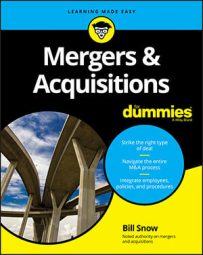Very rarely do Buyer and Seller conclude an M&A deal, walk away, and never interact again. Even though Seller has his money and Buyer has her company, the two sides usually have some post-closing issues to conclude.
One of the first items that need wrapping up after the deal closes is the post-closing adjustments. The closing day balance sheet often involves some guesswork, and the actual balances may not be available until a few weeks go by.
Usually 30 to 90 days after closing, Buyer presents an actual balance sheet as of the closing date to Seller. The parties compare this balance sheet to the estimated balance sheet presented at closing and true up (adjust) any differences in working capital.
In most cases, the adjustments are relatively small in relation to the purchase price, and most adjustments can be made by adding or subtracting money from the escrow amount.
However, depending on how the purchase agreement is worded, one side may have to write a check to the other side. Buyer is usually the one writing the check; Sellers usually insist on having any downward adjustments made to the money in escrow rather than paying them out of pocket.

